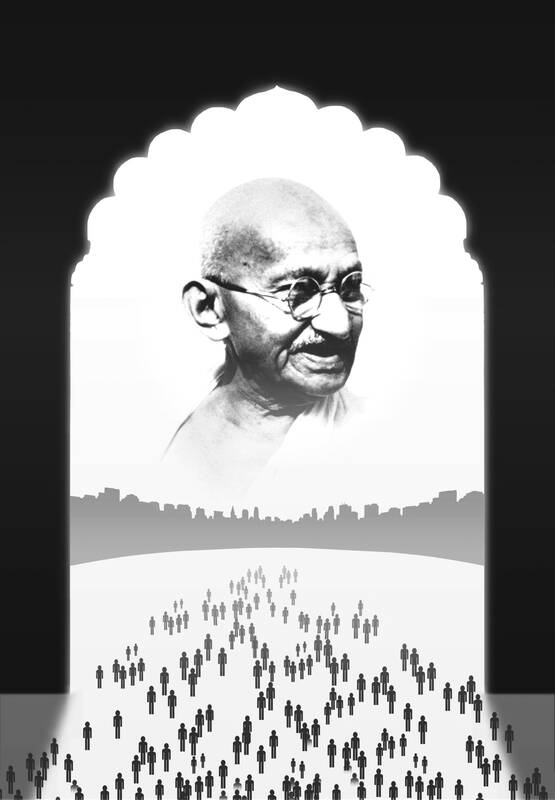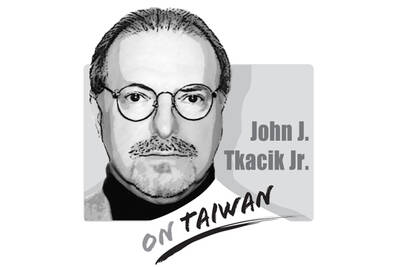It is but rarely that a man whose life, work and philosophy retain an enduring relevance, and who serves as a source of inspiration for all those who aspire to be better human beings, enters people’s midst. Mohandas Karamchand Gandhi, fondly called Mahatma Gandhi, was one such man.
Born in 1869 on this day, Gandhi was the leading figure in India’s national movement, the Father of the Indian nation, whose principle of satyagraha was instrumental in India’s struggle for freedom. Satyagraha goes beyond the mere absence of violence. It is a disarming moral force that compels those endowed with power to reflect on their manner of wielding it and consequently, rectify their behavior. As he once said: “A non-violent revolution is not a program of seizure of power. It is a program of transformation of relationships, ending in a peaceful transfer of power.”
The philosophical grounding of satyagraha lay in Gandhi’s theory of “relative truth.” To put it simply, Gandhi believed no one could ever be completely right, that all we could comprehend was a fragmented truth that was based on our partial view of the situation. This was derived from India’s rich philosophical tradition, specifically the Buddhist doctrine of the two truths, and the Jain doctrine of anekantavada, which emphasized the many-sidedness of truth.

Illustration: Yusha
Hence, he believed that violence could only be employed in a situation where the inflicter of violence was convinced that he was absolutely right, and the opponent was completely wrong. Moreover, he believed that violence was never successful in convincing the opponent of the validity of one’s arguments and beliefs, and thus could not bring about a long-term change of heart. He believed that non-violence is not passive but active, creative, provocative, and challenging. Gandhi described non-violence as “a force more powerful than all the weapons of world combined.”
Another powerful tool pioneered by Gandhi as part of satyagraha was the use of symbols in order to mobilize the masses. His legendary Salt March, where he used salt and the emotive issue of high taxes on this universally used product, is the best example of his innovative use of symbols. Similarly, the spinning wheel, the white Gandhi cap, and khadi cloth continue to be synonymous with the simple lifestyle he advocated and epitomized.
A philosophy of revolutionary simplicity, satyagraha served as a guiding light for a wide range of anti-colonial, democracy-supporting, and civil rights activists, including figures like Martin Luther King Jr, Nelson Mandela and Kwame Nkrumah. Taiwan, too, was not untouched by the principles of non-violence during its democratization process. During the Wild Lily Student Movement (野百合學運) in 1990, students protested peacefully to bring about changes in the governance system.
The relevance of Gandhi’s philosophy goes beyond politics to the realm of the everyday. Gandhi believed in the inherent goodness of man, that every person has the capacity for self-sacrifice in the pursuit of a larger goal. His principle of trusteeship, grounded in the belief that various sections of society can work together to build a harmonious society, still holds the potential to bring about an equitable socioeconomic order.
He was also a true believer in people’s power. He believed that great things could only be achieved through widespread public participation and not by central diktat or elite action. Indian Prime Minister Narendra Modi has employed Jan Bhagidari or “people’s participation” as an effective mechanism to bring about a large-scale economic transformation in India.
Never afraid to admit his faults and failings, Gandhi’s startlingly candid autobiography The Story of My Experiments With Truth is a testimony to his sincere quest for the most appropriate way to lead one’s life. It continues to inspire one to not succumb to dogma, but to be open to changing one’s mind, if the facts so dictate. His intellectual curiosity was such that his vision expanded beyond the confines of nationalism to encompass humanity as a whole. The end he envisioned was the peaceful enjoyment of sustainable prosperity for the human race.
It is no wonder that Gandhi’s outlook continues to inspire and inform India’s global vision. In an age where consumerism is encouraged and even celebrated, Modi has chosen to highlight prudence and thrift as crucial to protect and preserve the environment. This initiative, Mission LiFE (Lifestyle For Environment), has become a global mass movement that seeks to transform individuals into “pro-planet people” who consciously adopt a sustainable lifestyle that reduces their carbon footprint. During the launch of Mission LiFE, Modi said: “Gandhiji was one of those thinkers who long ago understood the importance of environmental protection and living life in harmony with nature. He developed the concept of trusteeship. Mission LiFE makes us all trustees of the environment.”
Moreover, Gandhi believed that his principle of non-violence was not just a means to achieving an end, but an end in itself. This remains relevant to our contemporary world. It inspires us to employ dialogue and peaceful negotiation as the most desirable way to achieve our ends, as opposed to force, or even the threat of violence. “An eye for an eye will only make the whole world blind,” his sage words continue to remind us.
On this auspicious day, I hope that Gandhi’s life and philosophy serve as a useful guide for all of us to live a life in harmony with nature and in consonance with the inner voice of our conscience. As he said: “Your beliefs become your thoughts, your thoughts become your words, your words become your actions, your actions become your habits, your habits become your values, your values become your destiny.”
Manharsinh Yadav is director-general of the India Taipei Association.

On May 7, 1971, Henry Kissinger planned his first, ultra-secret mission to China and pondered whether it would be better to meet his Chinese interlocutors “in Pakistan where the Pakistanis would tape the meeting — or in China where the Chinese would do the taping.” After a flicker of thought, he decided to have the Chinese do all the tape recording, translating and transcribing. Fortuitously, historians have several thousand pages of verbatim texts of Dr. Kissinger’s negotiations with his Chinese counterparts. Paradoxically, behind the scenes, Chinese stenographers prepared verbatim English language typescripts faster than they could translate and type them
More than 30 years ago when I immigrated to the US, applied for citizenship and took the 100-question civics test, the one part of the naturalization process that left the deepest impression on me was one question on the N-400 form, which asked: “Have you ever been a member of, involved in or in any way associated with any communist or totalitarian party anywhere in the world?” Answering “yes” could lead to the rejection of your application. Some people might try their luck and lie, but if exposed, the consequences could be much worse — a person could be fined,
Xiaomi Corp founder Lei Jun (雷軍) on May 22 made a high-profile announcement, giving online viewers a sneak peek at the company’s first 3-nanometer mobile processor — the Xring O1 chip — and saying it is a breakthrough in China’s chip design history. Although Xiaomi might be capable of designing chips, it lacks the ability to manufacture them. No matter how beautifully planned the blueprints are, if they cannot be mass-produced, they are nothing more than drawings on paper. The truth is that China’s chipmaking efforts are still heavily reliant on the free world — particularly on Taiwan Semiconductor Manufacturing
Last week, Nvidia chief executive officer Jensen Huang (黃仁勳) unveiled the location of Nvidia’s new Taipei headquarters and announced plans to build the world’s first large-scale artificial intelligence (AI) supercomputer in Taiwan. In Taipei, Huang’s announcement was welcomed as a milestone for Taiwan’s tech industry. However, beneath the excitement lies a significant question: Can Taiwan’s electricity infrastructure, especially its renewable energy supply, keep up with growing demand from AI chipmaking? Despite its leadership in digital hardware, Taiwan lags behind in renewable energy adoption. Moreover, the electricity grid is already experiencing supply shortages. As Taiwan’s role in AI manufacturing expands, it is critical that